Is the Swiss Travel Pass worth it? An honest review
Some links in this post are affiliate links, which means I earn a small commission if you book through them, at no extra cost to you. This support helps keep this site running, the suitcase wheels spinning, and lets me keep writing ultra-detailed travel guides that are free for you to use to plan your next adventure.
Planning your trip to Switzerland but wondering is a Swiss Travel Pass worth it? After trying out a couple of different travel passes in Switzerland, here’s a super detailed breakdown of the Swiss Travel Pass, when they’re worth it, when they’re not worth it, and some real-life calculations showing how much you could save on your itinerary.
If you’re weighing up the pros and cons of getting a Swiss Travel Pass for your upcoming Switzerland adventure, you’re in the right place.
Switzerland is one of the ultimate countries to explore via public transport, with a world-class network of trains, buses and boats getting you from A to B with epic views on the way, but there’s no denying it can be pricey, and that goes for transport too.
We all want to get the best bang for our buck and make sure our travel planning time is being put to good use, no one wants to waste time on confusing spreadsheets or overspend on train tickets.
As an avid travel nerd, and a bit of a Switzerland fangirl, I’ve visited the country five times in recent years for epic train journeys so I’m pretty clued up on Swiss Travel Passes (use promocode FINDINGALEXXKLOOK for 10% off!) and the other travel pass options. I’ve put together this ultra-detailed blog post to help you navigate the Swiss Travel Pass maze.
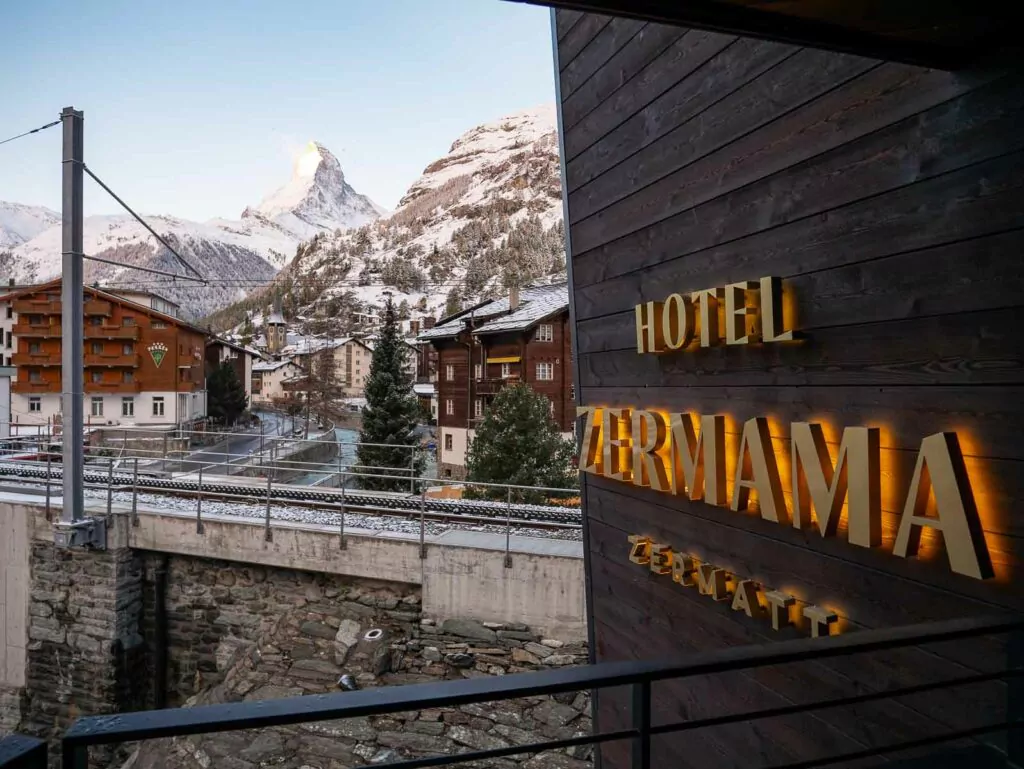
The Swiss Travel Pass ain’t cheap, but is it worth the money to make your Switzerland trip seamless and cost-effective? The short answer is that sometimes it is, but to really help you figure out if the Swiss Travel Pass is worth it we’ve got to look at how it works, specific example itineraries and alternatives that might be better.
Whether you’re a solo adventurer, a family looking to make unforgettable memories, or a group of friends wanting to experience Switzerland’s lush landscapes, this guide is going to tell you all you need to know about the Swiss Travel Pass and how to figure out if it’s worth it for your trip.
Summary: Is the Swiss Travel Pass worth it?
If you’re just looking for a quick answer to the question ‘is a Swiss Travel Pass worth it?’, the annoying answer is: it really depends.
Based on my personal experience and the calculations at the end of this blog post, the Swiss Travel Pass (I’ll refer to it as STP in this blog post) is pretty much always better than buying point-to-point, full fare tickets, but the Swiss Half Fare Card can often end up being even better value.
P.S. If you book your Swiss Travel Pass or Swiss Half Fare Card through these links, you can save 10% using the promocode FINDINGALEXXKLOOK.
To know for sure whether a STP is worth it, you need to write down all the transport you’re going to use during your Switzerland trip and calculate the point-to-point tickets vs. what it would cost with a Swiss Travel Pass vs. the Swiss Half Fare Card.
I can’t tell you whether the STP will be worth it for you just based on the cities/towns you’re visiting or the number of days you’re in Switzerland. It will totally depend on what mountain excursions you want to do, if you’re taking any panoramic trains, and if you know your itinerary well in advance or if you’ll be booking things last minute.
However, there are some scenarios in which a Swiss Travel Pass is *generally* either worth it or not worth it.
The Swiss Travel Pass is probably worth it when…
- Your itinerary includes the Glacier Express and another one or two panoramic trains
- You’re planning on using the public transport system to get between cities every couple of days at least
- You hate the idea of planning and just want to be able to stay flexible and jump on trains when you feel like it
- You’re visiting multiple cities but don’t plan on using any or many of the mountain railways or cable cars
- You’re happy to keep your mountain excursions to Rigi and Stanserhorn (the two that are free with the STP)
- You’re wanting to book most of your trip pretty last minute, within a few days of travel
- You’re doing the Grand Train Tour (all five panoramic trains)
The Swiss Travel Pass probably isn’t worth it when…
- You know your itinerary two or three months in advance and can pre-book tickets without needing them to be refundable
- You’re in Switzerland for three days or less
- You’re just visiting one or two cities or sticking to a specific region
- You plan on taking 3-4 or more mountain railways and cable cars (the Half Fare Card will probably be better)
- You want to go to Jungfraujoch (Jungfrau’s regional travel pass offers the best Jungfrau deal)
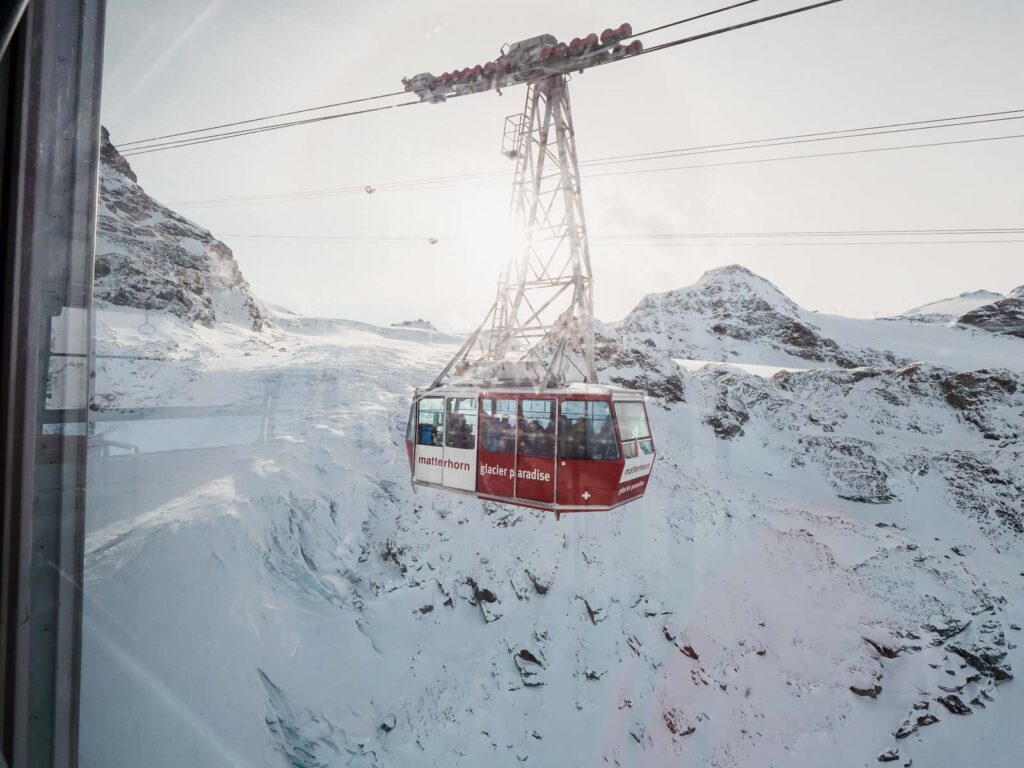
All you need to know about the Swiss Travel Pass
What is the Swiss Travel Pass?
The Swiss Travel Pass is your all-in-one ticket to travel freedom across Switzerland’s extensive public transportation network.
It’s designed for tourists and allows you to hop on and off trains, buses, and boats at your leisure, for a set number of days (either consecutive or flexible).
(P.S. Don’t forget the promocode FINDINGALEXXKLOOK for 10% off)
Swiss Travel Pass vs. Swiss Travel Pass Flex
The Swiss Travel Pass lets you choose from 3, 4, 6, 8 or 15 consecutive days of travel. You choose a start date for your pass and you’ll have unlimited access to public transport for the length of time your pass is valid for. Ideal for those who will be utilising the transport network each day of their trip.
The Swiss Travel Pass Flex offers all the same benefits but with the flexibility to choose the days you want to travel within one month. Choose a 3, 4, 6, 8 or 15 day Flex Pass and ‘switch on’ a travel day when you know that day is going to be worth it. This is ideal for longer trips and if you’ll have days that you won’t be using transport enough to make it worth using a ‘travel day’.
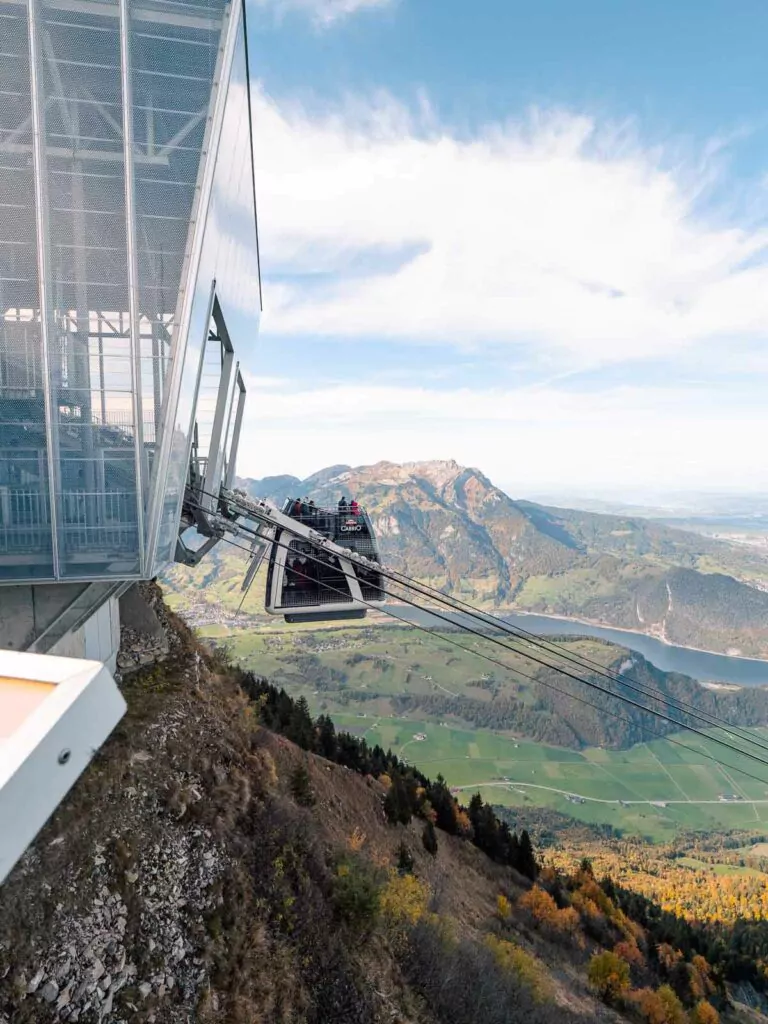
What does the Swiss Travel Pass include?
- Unlimited travel on buses, boats and trains across the Swiss Travel System network
- Free travel on panoramic trains like the Gotthard Panorama Express, Glacier Express and Bernina Express
- A couple of free mountain excursions (Stanserhorn and Rigi)
- 50% off most other mountain railways and cable cars
- Free public transport in 90 cities
- Free entry to more than 500 museums
What does the Swiss Travel Pass not include?
- Seat reservations on panoramic trains (most trains in Switzerland don’t require reservations but the Glacier Express, Bernina Express and a couple of others have either mandatory or recommended reservations)
- The mountain excursion to Jungfraujoch (but you do get a 25% discount)
- Mountain railways and cable cars like Gornergratbahn, Matterhorn Glacier Paradise, Titlis and Pilatus (but you do get a 50% discount on most of them)
- Private lake cruises

Swiss Travel Pass prices
Here are the prices for adult passes in 2nd class. 1st class passes are about 60% more expensive than the prices you see below.
Prices valid as of 17 April 2025, they typically put prices up annually at the most so these should be valid for the remainder of 2025.
| How long | Swiss Travel Pass | Swiss Travel Pass Flex |
| 3 days | 244CHF | 279CHF |
| 4 days | 295CHF | 339CHF |
| 6 days | 379CHF | 405CHF |
| 8 days | 419CHF | 439CHF |
| 15 days | 459CHF | 479CHF |
Can you get a discount on a Swiss Travel Pass?
If you’re between 16 and 25 you’re eligible for the Swiss Travel Pass Youth, this gives you a 30% discount on the pass prices above.
Kids aged between 6 and 16 (until their 16th birthday), accompanied by at least one parent holding a Swiss Travel Pass or Swiss Half Fare Card, travel free of charge across the network with a complimentary Swiss Family Card. More on that below!
Kids under 6 travel free of charge across the network, no Swiss Family Card needed.
There are no senior discounts for the STP unfortunately.
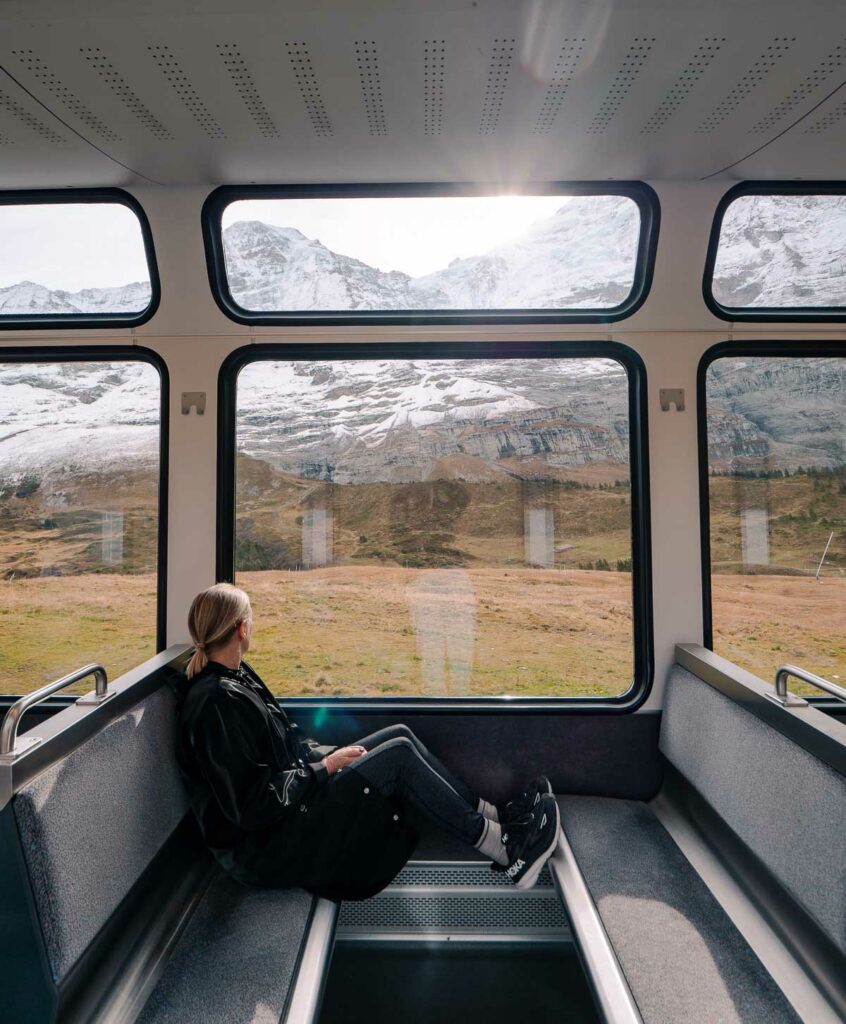
How to get a Swiss Family Card
If you’ve got kids aged 6-15 years old (until their 16th birthday), they can travel with you for free on the whole Swiss Travel System network with a Swiss Family Card, which you can get with your Swiss Travel Pass or Swiss Half Fare Card at no additional cost.
To get the Swiss Family Card you can simply add children to your pass when you purchase it from Klook or direct on the SBB website, example below of what it looks like on Klook.
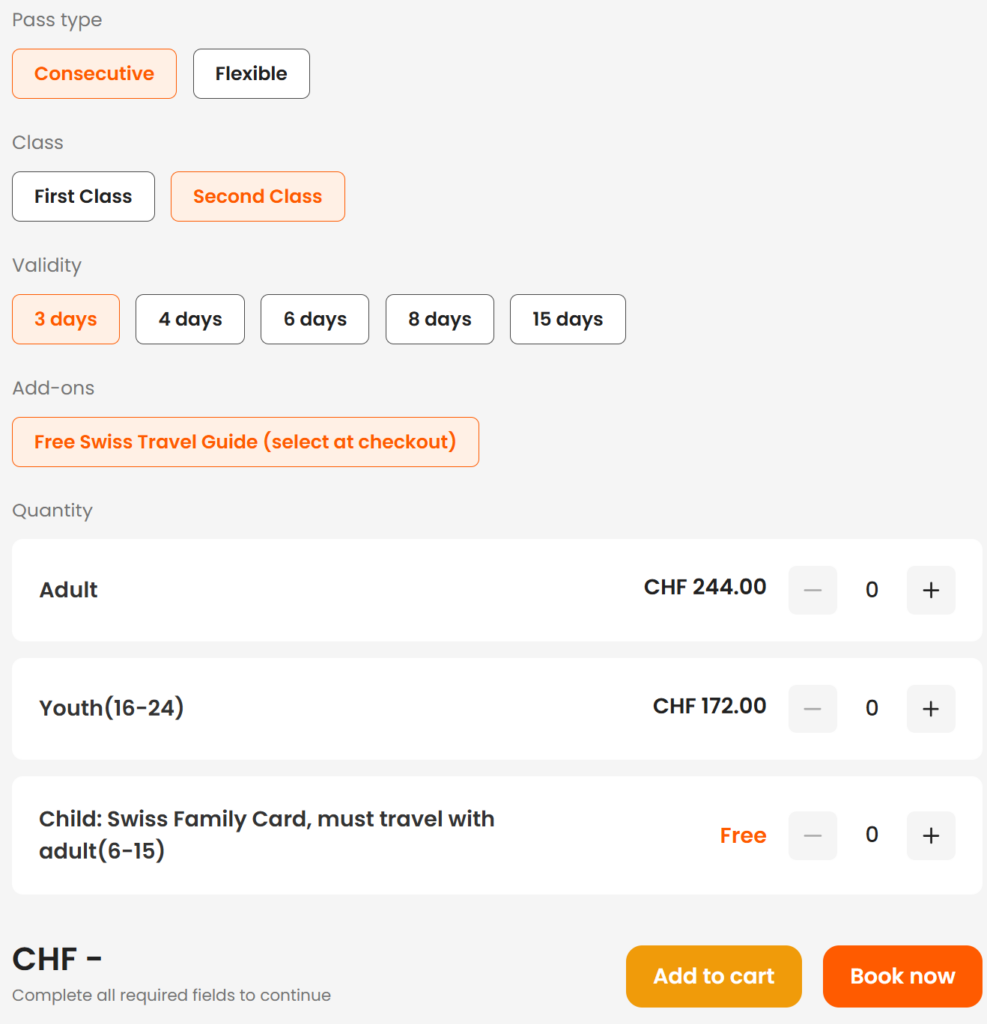
If you’ve already got your pass and forget to add on the Swiss Family Card then no stress, you can also get one from any Swiss Travel System point of sale in the country, so just head to any train station and the SBB office will be able to sort you out.
The Swiss Family Card gives kids free access to all routes where your Swiss Travel Pass (or Half Fare Card) provide benefits, even if the benefit is only a discount for the adults holding the pass.
This means that Jungfraujoch, which is still 147.80CHF for adults with a Swiss Travel Pass (or 111.90CHF for adults with a Half Fare Card), is completely free for children when they travel with you and you have a valid Swiss Family Card. Huge price saving!
How to use a Swiss Travel Pass
Where to buy a Swiss Travel Pass
You can easily buy a Swiss Travel Pass online (save 10% with promocode FINDINGALEXXKLOOK) from the comfort of your home or while you’re already in Switzerland.
Just keep in mind that you must have a valid STP if you’re taking advantage of the benefits, i.e. if you jump on a train with the plan to buy your STP once you’re on it, and you get asked for your ticket before you have a chance to buy it, you’ll get fined.
Is there a Swiss Travel Pass app?
There’s no Swiss Travel Pass app, but you can manage your pass online.
Once you purchase your STP you’ll be emailed a receipt with details on how to activate your pass.
If you’ve got a Swiss Travel Pass (with consecutive days), you simply need to show the QR code (on your phone or printed if you prefer) to the people checking train tickets.
If you have a Swiss Travel Pass Flex, you need to activate a travel day for each day you want to use the pass. You can do that at https://activateyourpass.com. Bookmark that URL on your phone or laptop for easy access.

Do you need to make seat reservations with the Swiss Travel Pass?
Most trains, boats and buses in Switzerland are reservation-free, meaning you can hop on and off with your pass without paying any additional supplements.
But there are some instances where seat reservations are mandatory, like:
- The Glacier Express
- The Bernina Express
- GoldenPass Express Prestige Class
- Gotthard Panorama Express
How to book mountain railways with the Swiss Travel Pass
If you want to take advantage of one of the mountain railway or cable car discounts with the STP, you can book these online and select ‘Swiss Travel Pass’ in the ‘discount’ dropdown. Just remember to activate a travel day for that day.
You can also purchase tickets at the relevant mountain railway/cable car station and show your pass to get a ticket at the discounted price.
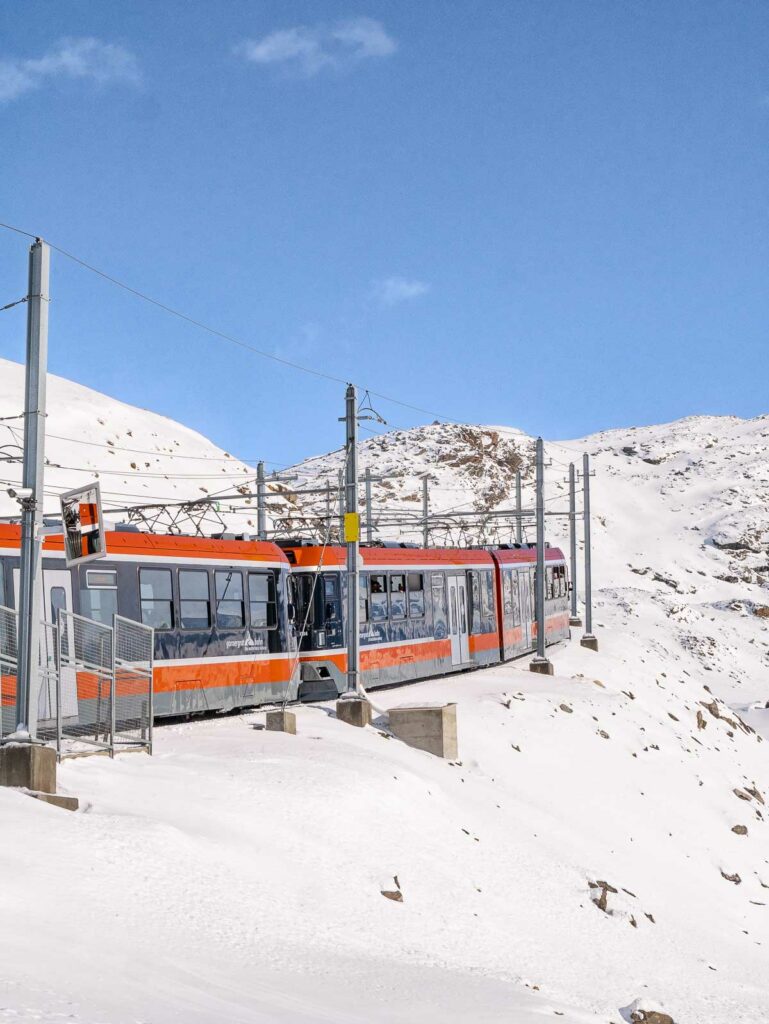
How to calculate if the Swiss Travel Pass is worth it for your trip
I get loads of messages from people sharing their rough itinerary and asking me if a rail pass is worth it, but unfortunately it’s a bit trickier than just looking at the cities you’re going to over six days and then knowing whether it’ll be good value or not.
Here are some deeper dives into how to truly figure out if the STP is worth it for your trip.
If you know your itinerary
If you know your itinerary, including what activities you want to do, you can easily figure out if a Swiss Travel Pass is worth it for you.
- Write each trip into a spreadsheet, e.g. Zurich to Lucerne or Jungfrau day trip from Grindelwald
- Create three columns in the spreadsheet, for the full fare price, the Swiss Half Fare Card price and the STP price
- Go to SBB.ch and search each train/bus/boat route you’re taking on the public network. If your trip is within six months then put in the actual date if you can, if it’s outside of six months just pop in a date 5-6 months from now.
- Note down the price for each trip for the Half Fare Card and for the full fare. The SBB system automatically shows you the half fare price first as the ‘from’ price, you’ll need to select ‘full price’ under travel options to see the actual price without a Half Fare Card.
- For ‘normal’ trips on the public transport network (i.e. not panorama trains or mountain railways/cable cars), put ‘0’ in the STP column as all of these are covered
- If you’re taking any panoramic scenic trains, check the prices on their website because you’ll need to add in mandatory seat reservations and ensure you’re noting down the correct seasonal prices. They should specify full fare prices, half fare prices and mandatory seat reservations for STP holders.
- For mountain railways like Rigi Kulm or Jungfrau, or for cable cars like Titlis or Matterhorn Glacier Paradise, check their websites to take note of the full fare and half fare prices. These websites should also show you a STP price but sometimes you’ll need to do a ticket search and select ‘Swiss Travel Pass’ as the discount to see the price.
- Add in a final row with the pass price, 120CHF for the Half Fare Card and the relevant price for the STP you need based on your trip length
- Total up the columns!
Your spreadsheet should look something like this:
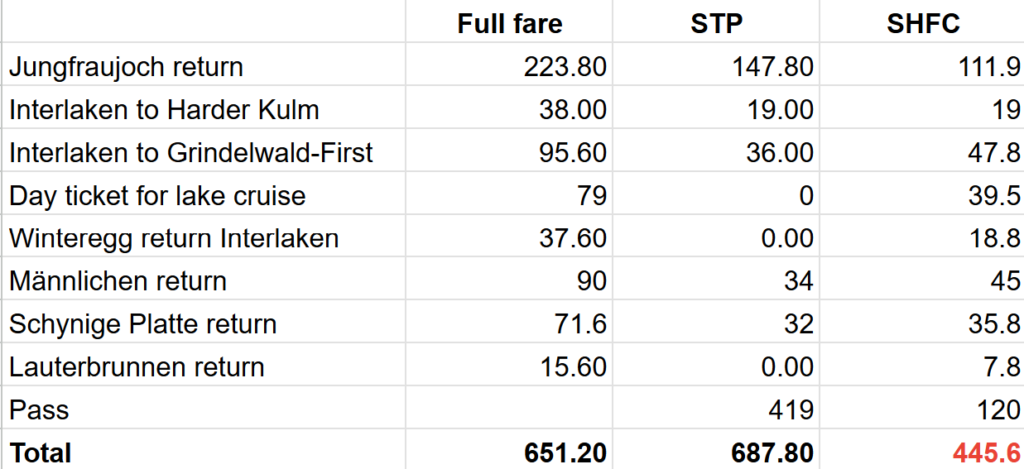
From here, you should be able to clearly see whether the Swiss Travel Pass, Half Fare Card or full fare tickets would offer the best value.
Important: Switzerland’s public transport system uses dynamic pricing based on demand, which means that public intercity trains (not mountain excursions) will get more expensive as more people book them. If you see that your trip is cheaper with full fare tickets or a Half Fare Card, lock these in in advance to make sure you get the best price before demand gets higher and the ticket price rises.
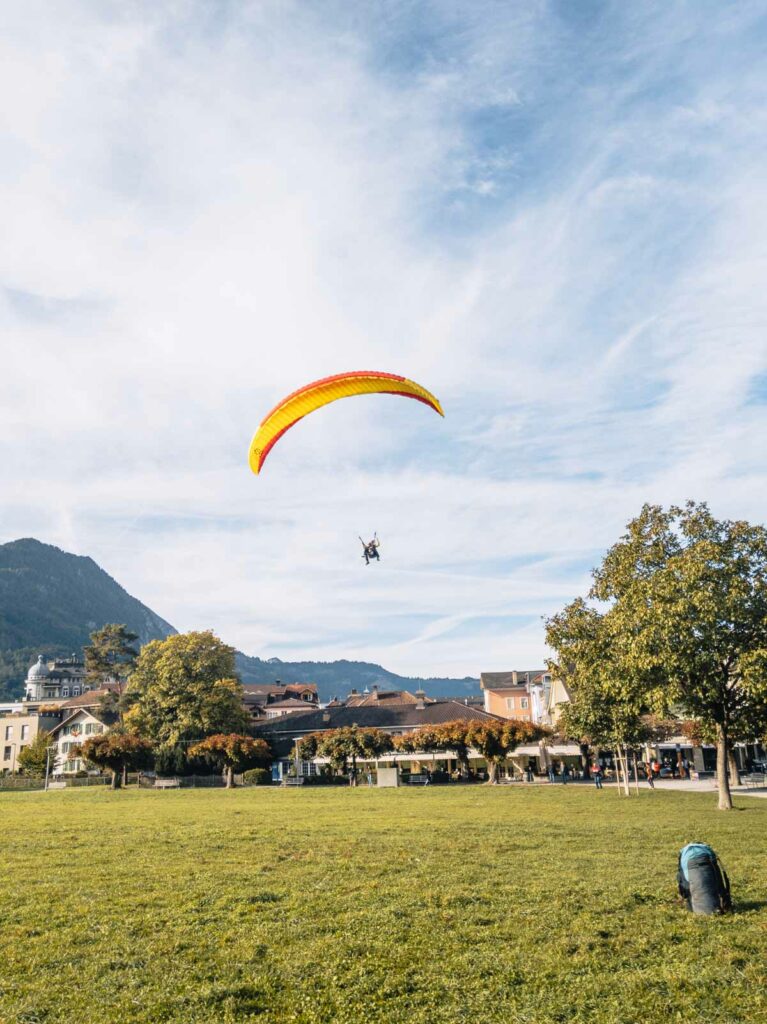
If you have no idea about your itinerary
If you don’t know your itinerary yet, and want to just go with the flow while you’re in Switzerland, it’s a little trickier to determine whether the Swiss Travel Pass is worth it.
The best way to do this is to consider the value of the pass per day, and make sure that you’re likely to save at least that cost if you used the pass. In the most basic of calculations, if the Swiss Travel Pass is going to save you more than the below prices on average per day across your trip, then it’s worth it.
Here’s the cost per day of the prices (as of 17 April 2025):
| How long | Swiss Travel Pass | Swiss Travel Pass Flex |
| 3 days | 81.33CHF | 93CHF |
| 4 days | 73.75CHF | 84.75CHF |
| 6 days | 63.17CHF | 67.50CHF |
| 8 days | 52.38CHF | 54.88CHF |
| 15 days | 30.60CHF | 31.93CHF |
If you’re planning a ten day Switzerland trip but don’t know where you’re going yet, consider whether you’re likely to save at least 55CHF per day on average by using buses/trains/boats and utilising discounts on mountain railways and cable cars. If so, then an 8 day Swiss Travel Pass Flex could be worth it for you (assuming you will have two days of your trip where you’re not using the pass).

Swiss Travel Pass vs. Half Fare Card if you don’t know your itinerary
This is the biggest question people what to know when they’re considering if the Swiss Travel Pass or the Half Fare Card are better, but if you don’t have your itinerary you need to either need to come back to this stage later in your trip planning, or take a good, hard look at your priorities and pull a rough itinerary together.
At the minimum, you need to:
- Figure out the cities you’re likely going to get between
- Choose the mountain excursions you definitely want to do (keeping in mind Rigi and Stanserhorn are free with the STP)
- Determine whether a Glacier Express trip is a must-do for you (probably Switzerland’s best trains)
- Determine whether Jungfrau is a must-do for you (iconic Top of Europe)
- Figure out how long in advance you think you’ll know your plans
From here you’ll have a rough idea like this:
- 2 x intercity trips
- 2 x Glacier Express trip
- 2 x mountain excursions (the free ones on the STP)
- Not keen for Jungfrau
- Wants to confirm plans a before travel, to keep the trip very flexible
With this in mind you can out together the spreadsheet just using rough searches and dates for your routes. It’s not going to give you exact pricing relevant to your route, but it will at least give you a good idea on if the STP or the Half Fare Card will likely come out on top.
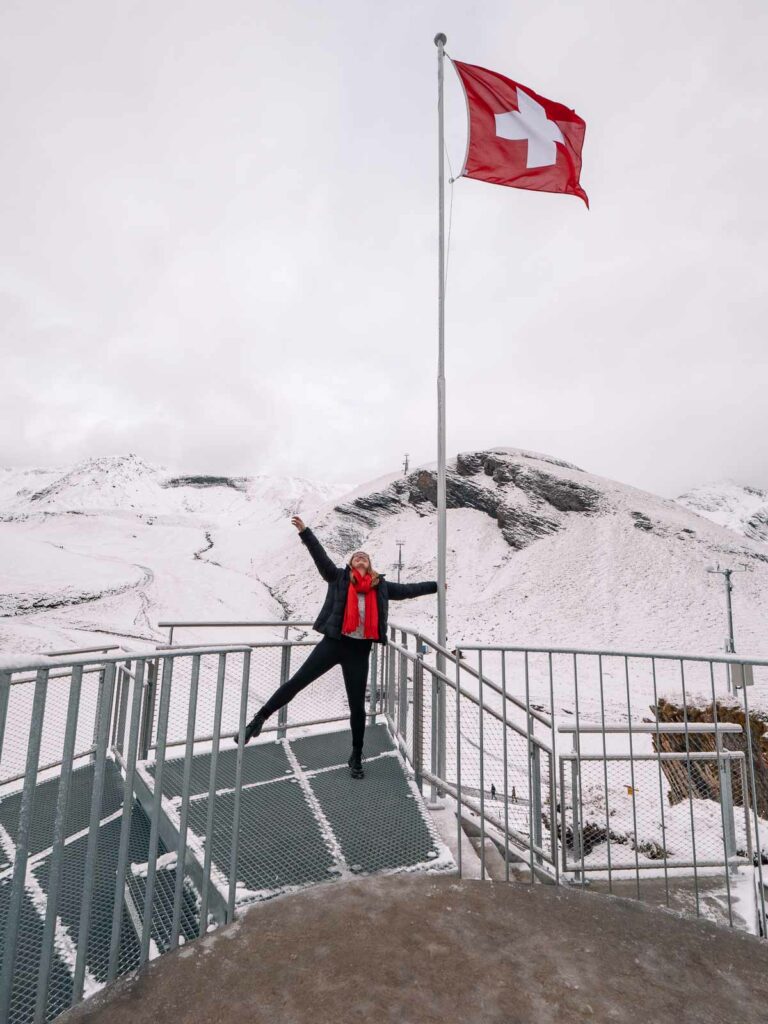
Pros of a Swiss Travel Pass
- No need to buy tickets for trips on the trains/buses/boats on the public network, just jump on and show your pass to the driver, ticket staff or train controllers
- Free entry to 500 museums
- Free public transport in most cities/towns
- Free access to Rigi and Stanserhorn mountains
- Discounted access to many other mountains (usually 50% but 25% for Jungfrau)
- Covers the whole ticket cost of the expensive panorama trains, which saves you a whopping 159CHF on a Glacier Express 2nd class ticket or 272CHF on 1st class. You still need to pay the 44-49CHF seat reservation, but a Half Fare Card would still require you to pay 79.50CHF for the 2nd class ticket on top of the reservation.
Cons of a Swiss Travel Pass
- Expensive up-front price
- Only for a set number of days which is annoying if you need a pass for the number of days in between, e.g. 5, 7, 10 or 12
- A maximum of 15 days on the pass, compared to the Half Fare Card which is valid for one month
- Only 25% discount at Jungfrau (compared to 50% on the Half Fare Card)
- You might pay for days you don’t end up using to their full potential (e.g. if you don’t travel on one of the days of the pass, or if you end up doing a short trip which would have been cheap without the pass anyway)
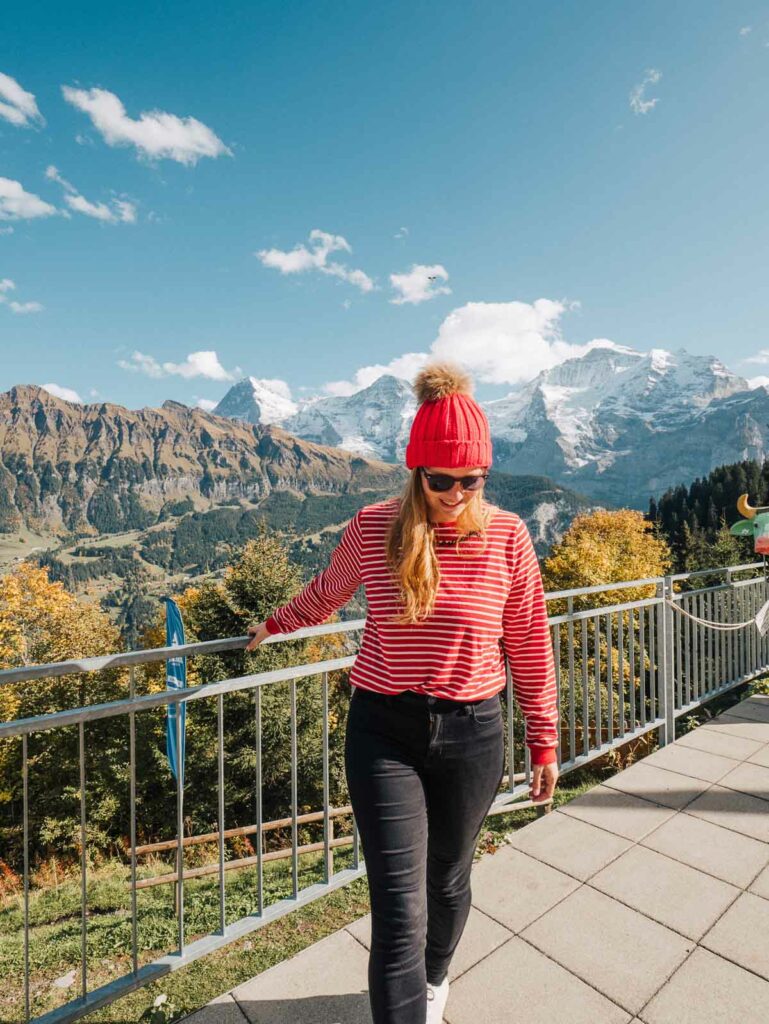
Is a Swiss Travel Pass worth it? Four example itineraries
I want to share four example itineraries to show you the value of the Swiss Travel Pass vs. point-to-point tickets, and I’ve included the Half Fare Card in there too.
Each of these example itineraries is using prices for tickets booked one month in advance. Keep in mind that if you book any later than one month in advance, chances are the prices will be higher.
Five days in Switzerland: Swiss Travel Pass budget breakdown
For this one I’m using my five day Switzerland itinerary, which includes:
- Zurich to Interlaken
- Interlaken to Schiltorn day trip
- Interlaken to Jungfrau day trip
- Interlaken to Zermatt
- Zermatt to St Moritz (Glacier Express)
Here’s a spreadsheet showing the breakdown:

The Half Fare Card ends up being about 30% cheaper than buying full fare tickets, and 19% cheaper than doing the same trip with a Swiss Travel Pass.

Ten days in Switzerland: Swiss Travel Pass budget breakdown
My ten day Switzerland itinerary is longer and includes five mountain excursions + two epic panorama train trips. I’ve calculated the below based on an eight-day Swiss Travel Pass Flex, leaving two days for shorter trips or local travel that doesn’t require a pass day.
Here’s the breakdown:
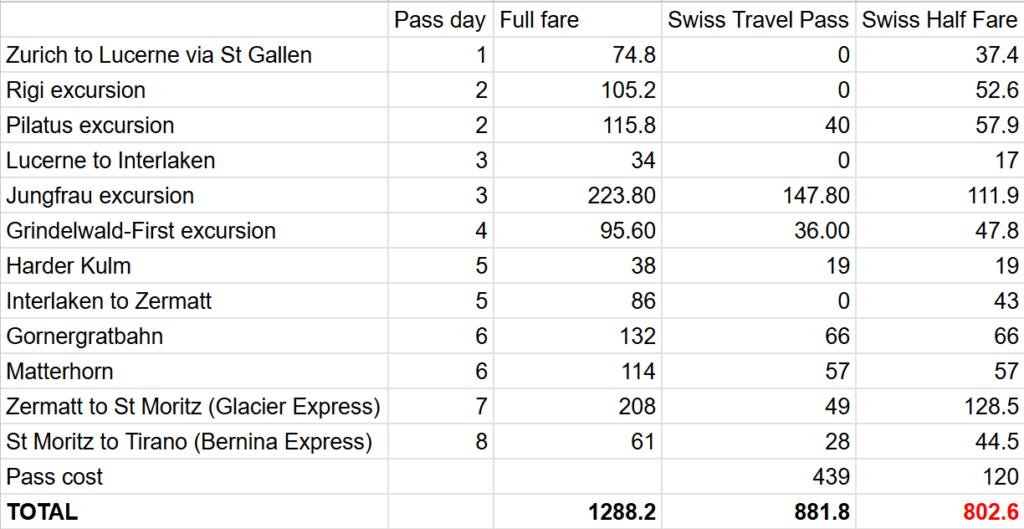
As you can see, the Swiss Half Fare Card comes out on top again! It’s 37.7% cheaper than buying point-to-point tickets, and 9% cheaper than using a Swiss Travel Pass Flex.
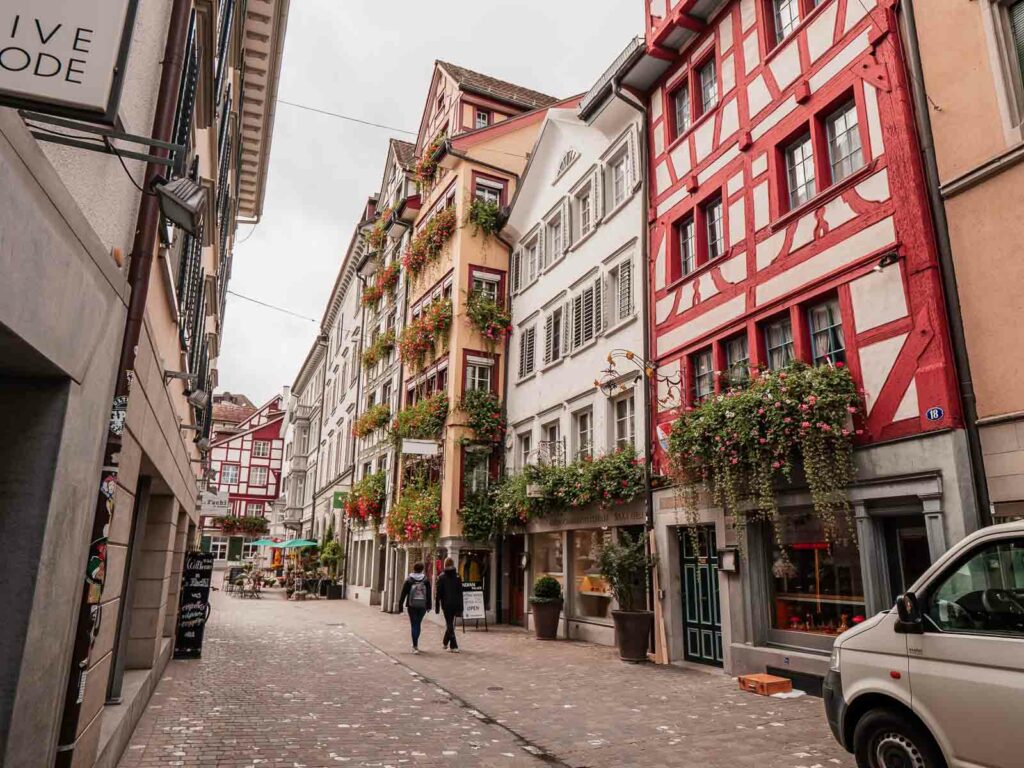
Free mountain railways only
Let’s throw a spanner in the works and say you’re taking my ten day Switzerland itinerary but removing the mountain excursions that aren’t free with the Swiss Travel Pass, just focusing on city trips, free excursions and hikes that don’t require cogwheel trains or cable cars.
Here’s the breakdown:
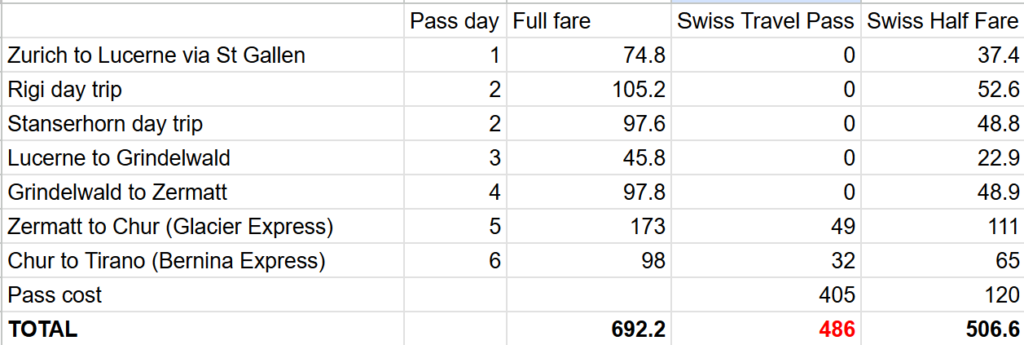
In this instance, the Swiss Travel Pass actually comes out on top! It saves 4% vs. the Half Fare Card and almost 30% compared to full fare tickets.
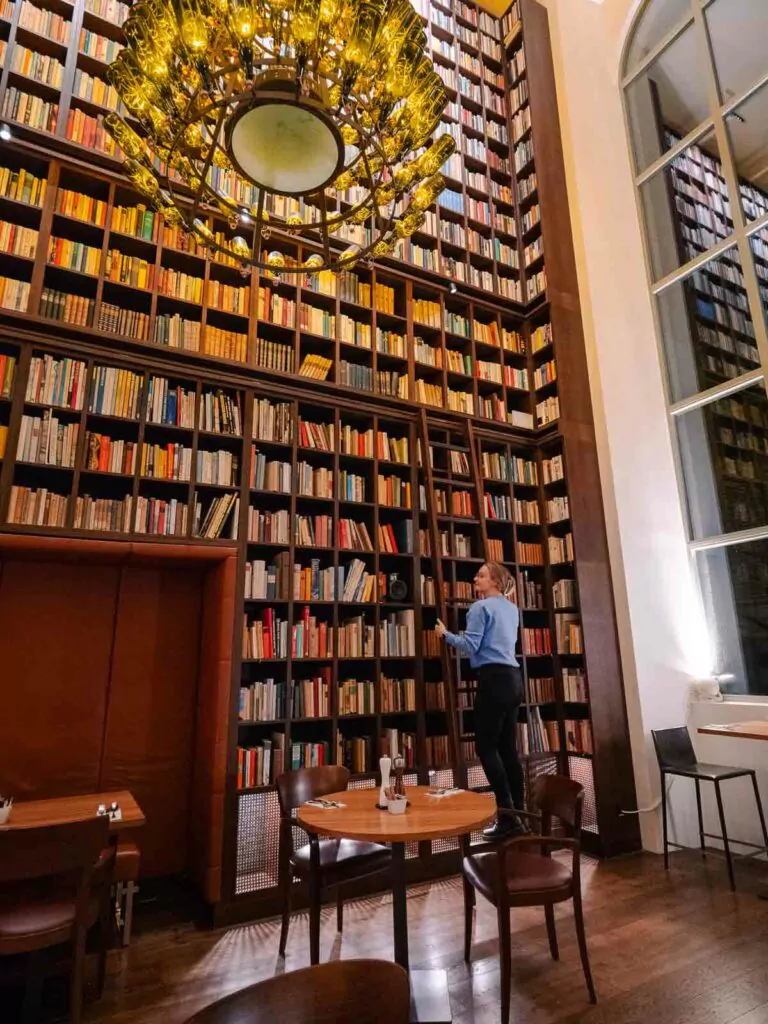
Short trip with free mountain railways only
I’m determined to find a way where the Swiss Travel Pass comes out on top by a bigger margin, and I think I’ve found one.
Let’s cut down the itinerary length but include longer train trips, a panorama train journey, free mountain excursions and book everything last minute, only a few days before travel. Here’s the breakdown:

This trip utilises a four day Swiss Travel Pass Flex and there’s only one additional supplement to pay on top of the travel pass, the Glacier Express seat reservation. In this instance the Swiss Travel Pass ends up being 36.7% cheaper than the point-to-point full fare tickets, and 14% cheaper than the Swiss Half Fare Card.
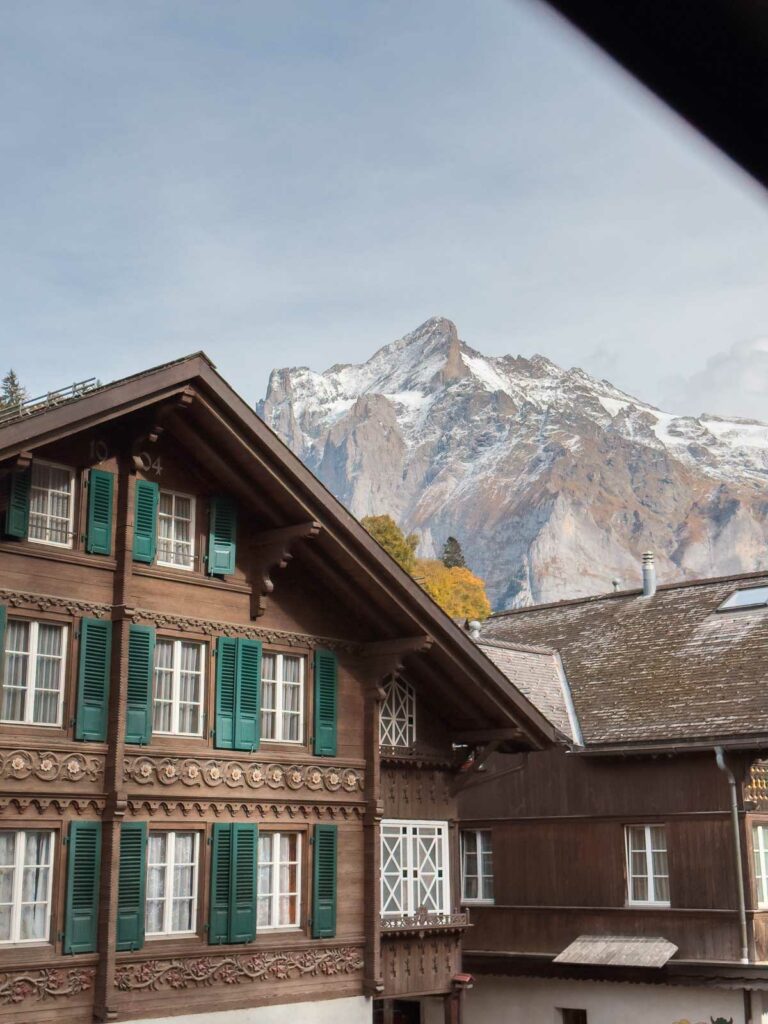
Swiss Travel Pass alternatives
I’ve talked about the Swiss Half Fare Card a little bit already but here’s some more info on that, plus a bunch of other alternatives you could consider instead of the Swiss Travel Pass.
Swiss Half Fare Card
The Swiss Half Fare Card is exactly what it says on the tin, it gives you half-price fares across the Swiss Travel System network.
There are a couple of key benefits to the Swiss Half Fare Card which make it a great option in lots of scenarios:
- It gives you 50% off most mountain railways and cable cars at half price, sometimes this is the same as the Swiss Travel Pass but in some cases, like Jungfrau, it’s even more of a discount
- It’s only 120CHF and lasts a whole month
- 10% off with my promocode FINDINGALEXXKLOOK when you book through this link
And the disadvantages:
- It only gives you 50% discount on the tickets for the panorama trains like the Glacier Express, you still need to pay the full seat reservation
- You have to pay 50% for Rigi and Stanserhorn mountains, which are free with the Swiss Travel Pass
- You need to purchase tickets for each train, bus and boat, unlike the Swiss Travel Pass where you just show your pass to be allowed on. You can easily book them on the SBB app or website, just make sure you’re clicking the half-fare discount.
Save 10% on your Swiss Half Fare Card with promocode FINDINGALEXXKLOOK >>
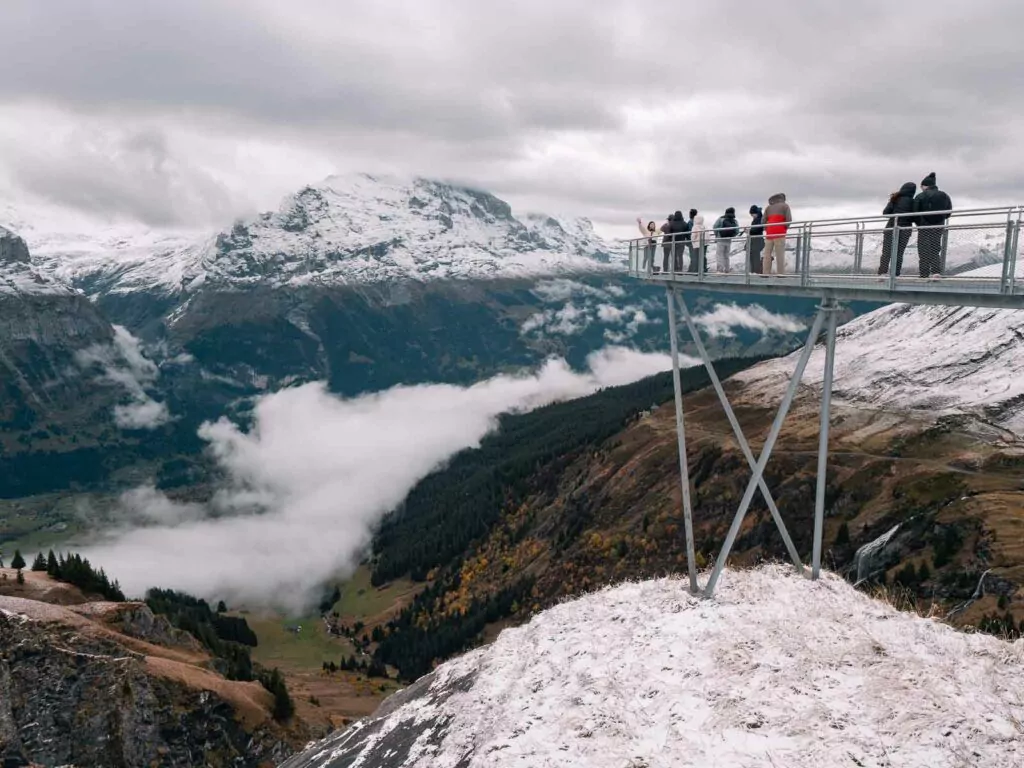
Point-to-point full fare tickets
A point-to-point, full fare or individual ticket is all the same thing, and it refers to just going to the SBB website or a train station to book a trip at the full fare price.
This is pretty much never the cheapest option if you’re travelling in Switzerland and plan on taking at least a few trains during your time there.
If you’re travelling last minute, the point-to-point tickets can be significantly higher (like twice as high) as what you might have seen if you checked prices two months ago.
Regional passes
To make things really confusing, different regions in Switzerland sometimes have their own travel passes that cover public transport and offer various discounts on mountains.
If you’re happy to spend a bit more time on your calculations, you might want to add up what a regional pass would cost in conjunction with a Swiss Half Fare Card that you could use for the rest of your trip.
Tell Pass in Lucerne region
- Unrestricted travel on rains, buses and boats and aerial cableways throughout the Lake Lucerne region
- 100% discount on mountain excursions like Rigi, Stanserhorn (both free with an STP) and also 100% discount on Pilatus and Titlis (STP only gets 50% off most cable cars and mountain railways)
- 2, 3, 4, 5 and 10 consecutive days
- Passes start from 120CHF in winter and 190CHF in summer for a two day pass
- Cheaper price per day than the Swiss Travel Pass, could be used in this region and then a STP or Half Fare Card for the rest of the trip
- The 10% promocode works with this one too!
Save 10% on your Lucerne Tell Pass with promocode FINDINGALEXXKLOOK >>
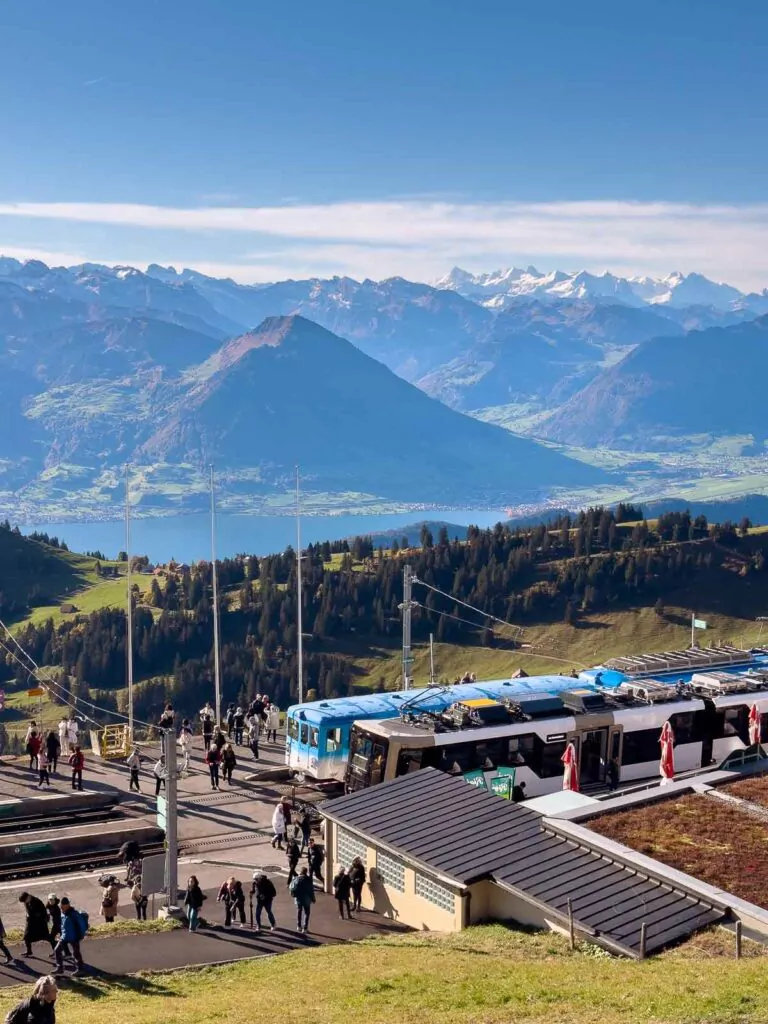
Berner Oberland Pass in Bernese Oberland
The Berner Oberland Pass had some major changes made in 2025 so please note that some info online might be out of date, these are the current benefits.
- Unrestricted travel on public transport in the Bernese Oberland region, stretching to Lucerne, Bern, Montreux and Domodossola
- Covers the whole Montreux-Oberland-Bahn route and is valid on the GoldenPass Express scenic train (reservations recommended)
- Includes free travel on some mountain excursions and cable cars, including the whole journey to Schilthorn
- 50% discount on Harder Kulm, Grindelwald-First and Schynige Platte
- Free travel to Wengen/Grindelwald, then 25% off the trains/cable cars to Jungfraujoch (but 50% discount if you also have a Half Fare Card)
- Boat trips on Lake Thun and Lake Brienz are included
- 3, 4, 6, 8 or 10 days
- Starts from for the 240CHF full fare but you can bring that down to 168CHF if you have a valid Swiss Half Fare Card or if you’re between 16 and 25
- Discounts from local suppliers like cheaper activities, restaurant offers etc.
- 10% off through the link below when you use the promocode!
Save 10% on the Bernese Oberland Pass with promocode FINDINGALEXXKLOOK >>
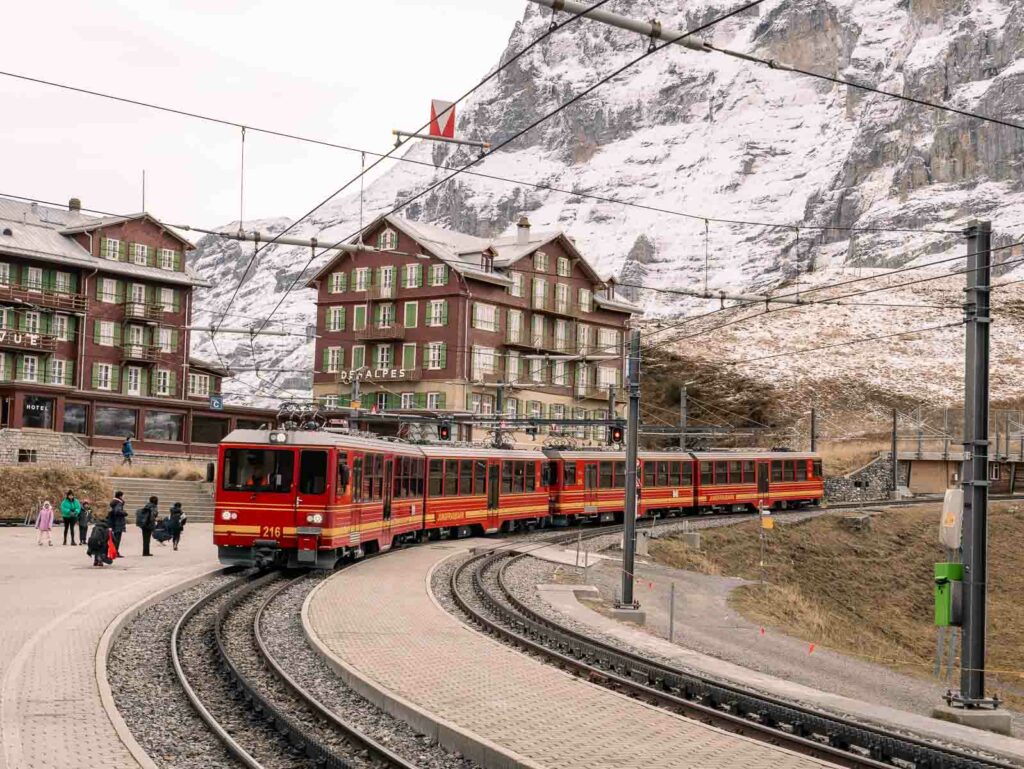
Jungfrau Travel Pass for Jungfrau region
- Unlimited travel on boat. buses, trains, cable cars and most mountain railways in the Jungfrau region
- Includes Interlaken and boats across the lakes, Harder Kulm, Lauterbunnen, Mürren, Wengen, Grindelwald and the train from Kleine Schedegg to Eigergletscher
- You can get the return train from Eigergletscher to Jungfraujoch for a special price of 63CHF (low season) or 75CHF (high season)
- Prices start from 210CHF for a full fare Jungfrau Travel Pass but you can bring that down to 165 if you own a Swiss Half Fare Card
- I sound like a broken record now, but 10% off when you book through the link below and use the promocode FINDINGALEXXKLOOK 💰
Find out more about the Jungfrau Travel Pass >>
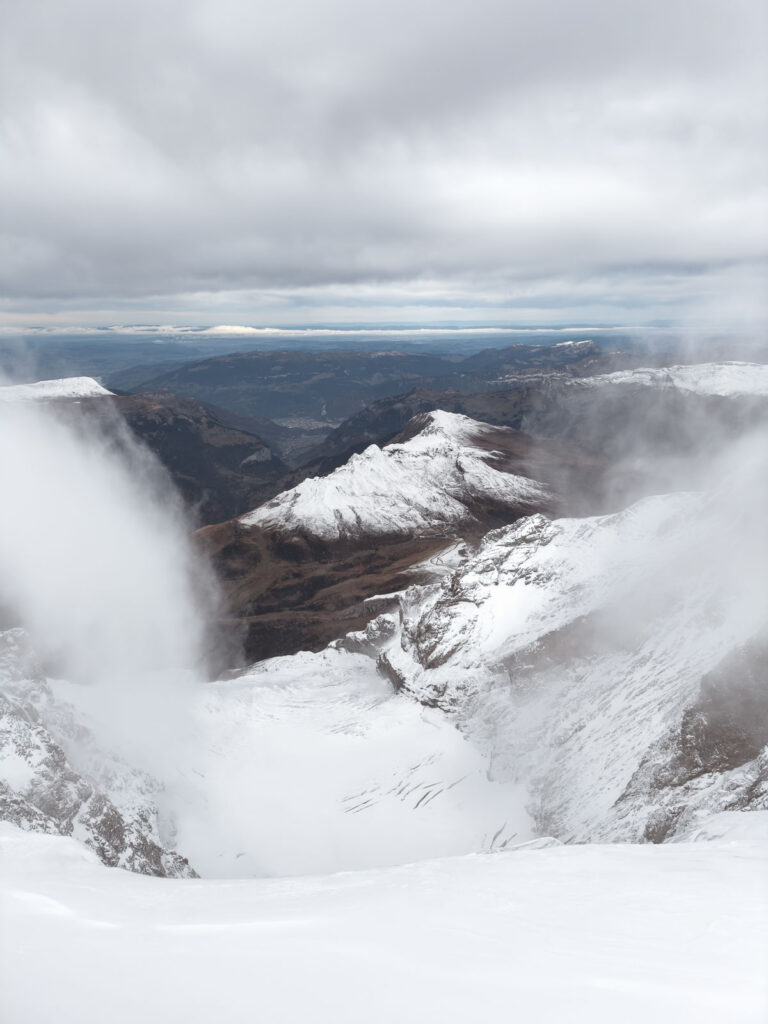
Zermatt Peak Pass
- Unlimited travel (not valid for skiing) on the following lifts and trains: Zermatt-Matterhorn Glacier Paradise, Zermatt-Gornergrat, Furi-Riffelberg and Zermatt-Rothorn
- Admission to Glacier Palace, use of Matterhorn Gotthard Bahn between Randa, Tasch and Zermatt
- Local buses also included
- You get a 25% discount with a Half Fare Card or Swiss Travel Pass
- Prices depend on what month you’re travelling, full fare one day tickets are 180CHF in pre-season, 212CHF in basic season, 234CHF in peak season
- Longer stays work out at much better value, five day passes in the different seasons are 236CHF, 276CHF and 306CHF respectively
- If your only mountain plans in Zermatt are to do the Gornergratbahn and Matterhorn Glacier Paradise, it’s cheaper to just get the Half Fare Card. With the Half Fare Card it would only be 111.55CHF for return tickets for both, compared to the 129CHF for a half-fare discounted one day Peak Pass.
- If you’re planning on hiking or mountain biking a lot in Zermatt over multiple days then a Peak Pass might be worth it
Find out more about the Zermatt Peak Pass >>
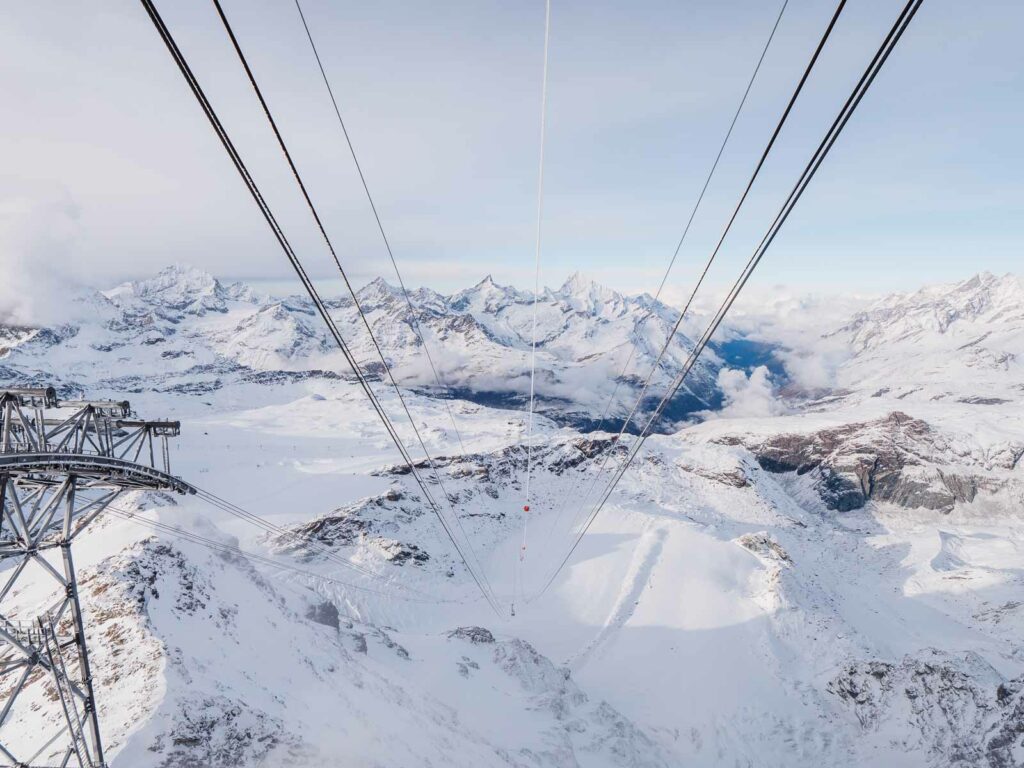
Eurail/Interrail Passes
If your time in Switzerland is part of a bigger trip, like spending a couple of months in Europe or combining Switzerland and Northern Italy, you could look into getting a Eurail (for non-European residents) or Interrail (for European residents) Global Pass to cover your trains inside and outside of Switzerland.
- Covers most trains across Europe but reservations might be required (particularly expensive in France and Italy)
- Free travel on most of Switzerland’s public inter-city trains
- Seat reservations required for panoramic trains
- Doesn’t include mountain railways or cable cars but you might get a discount (usually 25%, some give 50%)
- Doesn’t cover public transport within a city
- Doesn’t cover buses or boats, but you might get a discount on some lake cruises
- The Eurail or Interrail Pass generally isn’t as good value in Switzerland as the Swiss Travel Pass or Half Fare Card because of the low mountain railway discounts, so I’d recommend looking into splitting your trip. You could use a Eurail Pass for your journeys between cities like Zurich to Lucerne or Zermatt to St Moritz on the Glacier Express, then get a Half Fare Card or regional pass like the Tell Pass to cover your mountain railways.
Find out more about the Eurail Global Pass >>
Find out more about the Interrail Global Pass >>
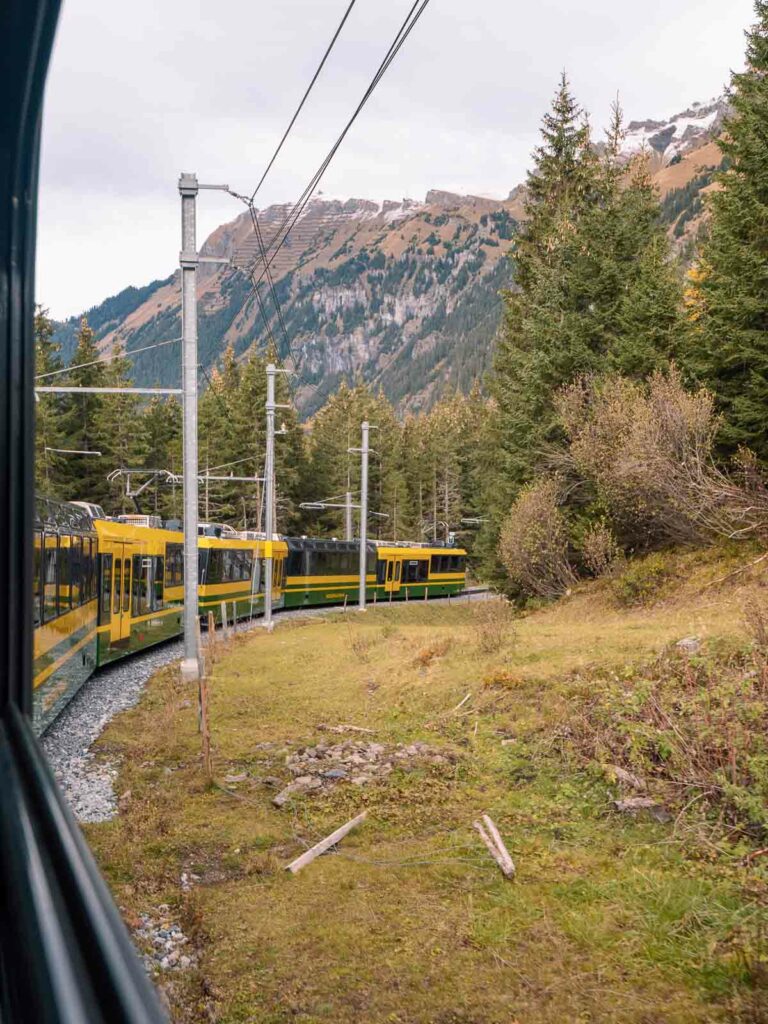
Saver Day Pass
A Saver Day Pass is almost like a one day Swiss Travel Pass, giving you unlimited travel across the Swiss Travel System network for one day (from midnight until 5am the next morning).
- The cost of the Saver Day Pass varies, it’s cheaper if you book it in advance and it’s non-refundable, so you need to know what day to buy for
- Could be good if you’re planning on visiting Switzerland for only a few days and just want one or two big adventure days with long trains
- Also great if you’re in Switzerland for work or family reasons and will only have one day to be able to explore, book your Saver Day Pass in advance and you’ll be able to go wherever you want
- And if you’re mostly sticking to one region like Jungfrau or Lucerne, you might want to get a regional pass that has good coverage of mountain excursions + get a Saver Day Pass for your arrival day and train from Zurich
- No discount on most mountain railways
- Combinable with the Half Fare Card
Book a Saver Day Pass on sbb.ch >>
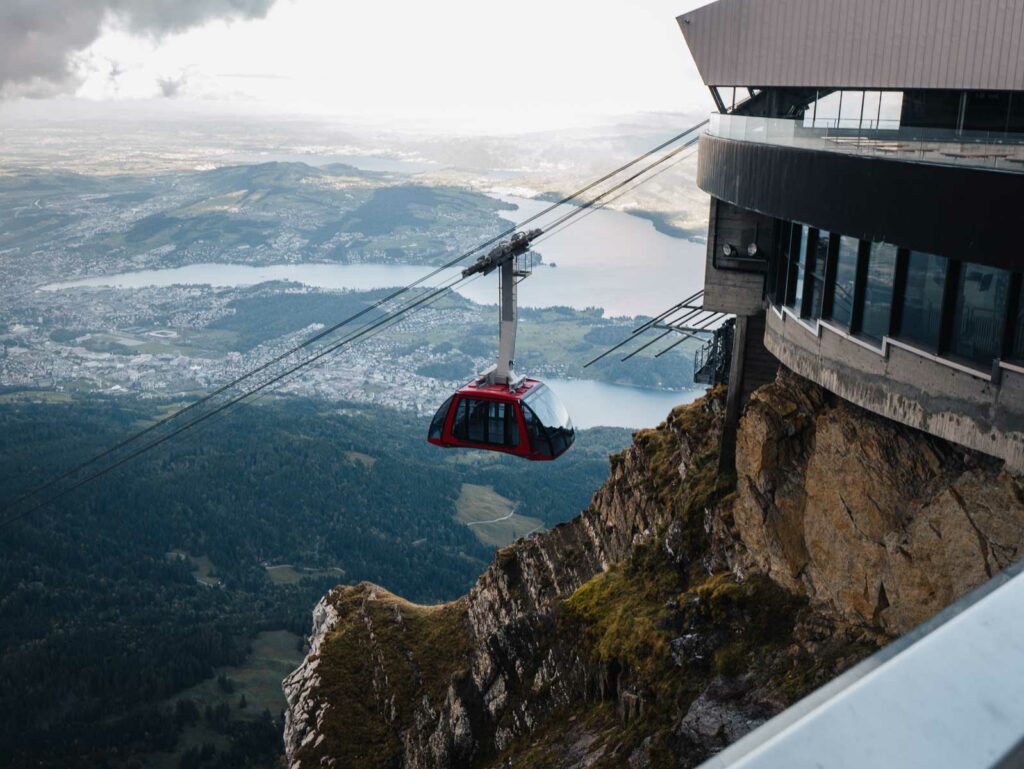
Swiss Travel Pass FAQs
Is the 1st class Swiss Travel Pass worth it?
The value of a 1st class Swiss Travel Pass totally depends on your travel preferences and budget.
Most Swiss trains on the Swiss Travel System network have 1st class carriages with have more spacious seating and comfier seats, and they’re usually less busy than the 2nd class carriages, which means less noise. 1st class carriages usually have two seats on one side and a single row of seats on the other, so for solo travellers they’re great as you won’t need to sit next to someone.
If you have a 1st class pass that also gives you access to book 1st class tickets for the Glacier Express which is an incredible experience and definitely worth the money if you can afford it.
I personally go for the 1st class pass because I like to work on long trains and I find this easier in a cabin where there’s a single row of seats so I’m not typing away next to a stranger.
But if you’re just travelling for normal sightseeing, in a couple or a family/friends group, and aren’t fussed on the 1st class Glacier Express experience, then just go for 2nd class and save that money for your adventures.
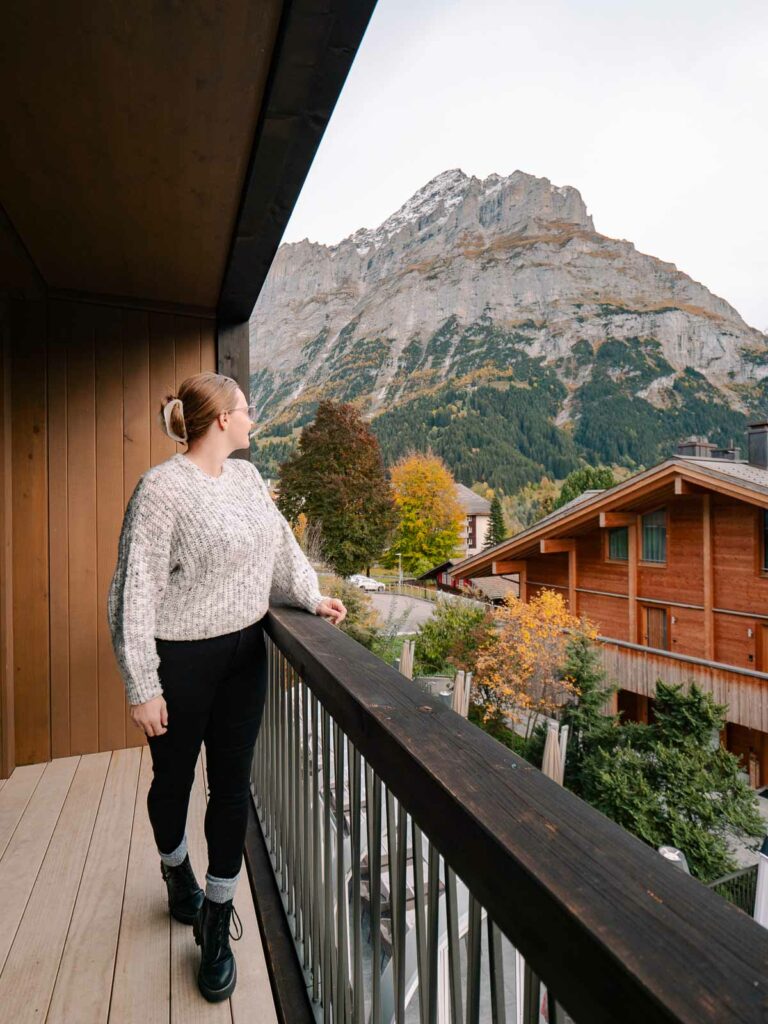
Is Jungfraujoch free with Swiss Travel Pass?
The Jungfraujoch journey is not entirely free with the Swiss Travel Pass, but the pass entitles you to a discount.
Getting to Grindelwald or Wengen is fully covered by the pass. From there, you receive a 25% discount on the train or cableways to reach Jungfraujoch.
Does the Swiss Travel Pass cover the Grand Train Tour?
If you’re up for a major adventure, the 1280km Grand Train Tour is a bucket list train journey worth considering.
The tour consists of eight different trips that combine to create a figure-eight-ish round trip, mostly train but some bus and boats thrown in for fun, and includes the five premium panoramic trains.
The Grand Train Tour is completely covered by the Swiss Travel Pass, you’ll just have to pay for seat reservations on the Bernina Express, Glacier Express and Gotthard Panorama Express.
Does the Swiss Travel Pass cover all mountain railways and cable cars?
The Swiss Travel Pass covers a couple of mountain railways and cable cars, like Rigi and Stanserhorn.
Other mountain railways and cable cars are discounted:
- Pilatus (free to reach Kriens or Alpnachstad by bus, train or boat, then 50% off for the train and cable car to Pilatus)
- Titlis (free to Engelberg, 50% off to the top)
- Schiltorn (free to Mürren or Stechelberg, then 50% off the cable car to the top)
- Jungfraujoch (free to Grindelwald or Wengen and then 25% off)
- Grindelwald-First (50% off)
- Matterhorn Glacier Paradise (50% off)
- Glacier 3000 (50% off)
- Gornergratbahn (50% off)
- Schynige Platte (free to Wilderswil, then 50% discount)
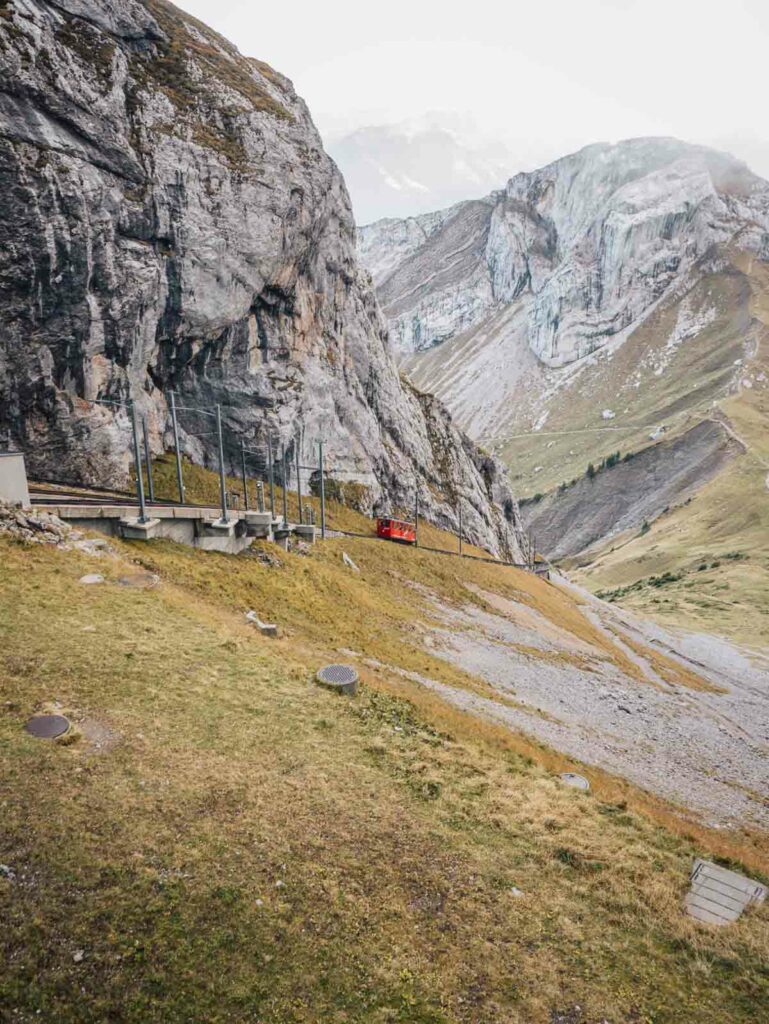
What is the Swiss Rail Pass?
The terms “Swiss Rail Pass” and “Swiss Travel Pass” are often used interchangeably, but they refer to the same product: the Swiss Travel Pass.
The final verdict: Is a Swiss Travel Pass worth it?
Well this was a long one! The final verdict is this:
The Swiss Travel Pass is almost always cheaper than buying point-to-point tickets, BUT the Swiss Half Fare Card is often even better value.
If you want to stay flexible and would prefer the freedom to jump on an off trains as you choose, the convenience of the Swiss Travel Pass is probably worth the extra you might pay vs. a Swiss Half Fare Card.
Alternatively, if you don’t mind purchasing tickets for each trip, and you want to do mountain excursions that aren’t free with the STP, then the Half Fare Card will probably end up being a better deal for you.
And don’t forget to use the promocode FINDINGALEXXKLOOK to save 10% on either pass when you book through the links below.
Buy your Swiss Half Fare Card >>
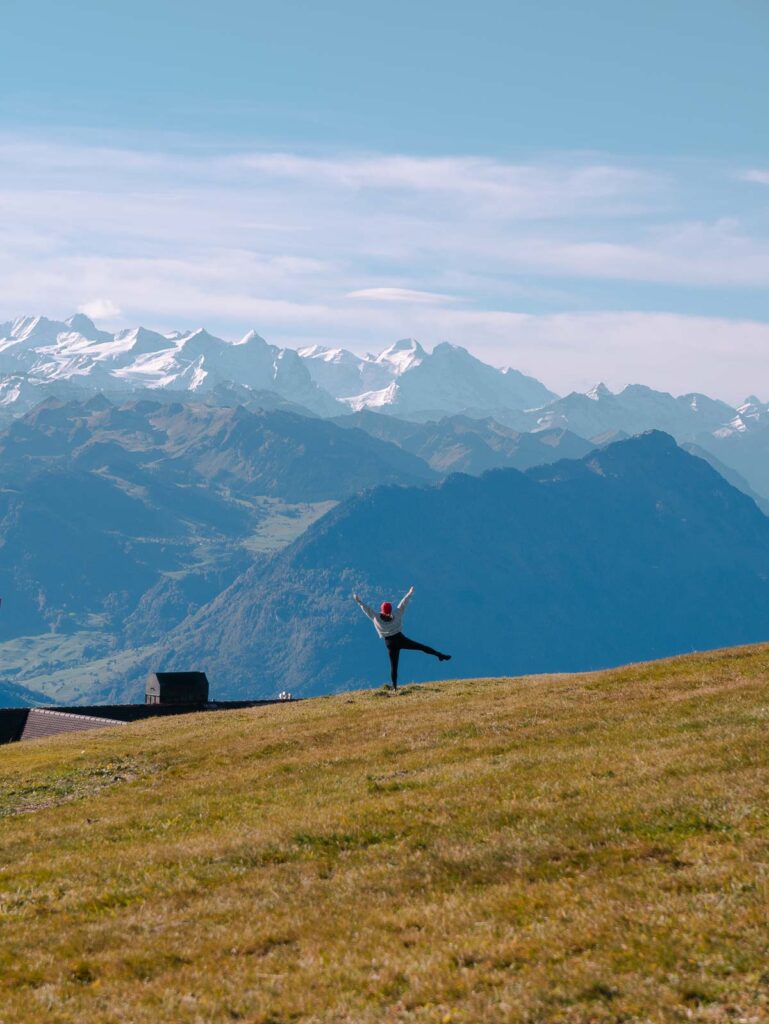
MORE SWITZERLAND TRAVEL INSPIRATION:
- How to spend 10 days in Switzerland
- How to spend 5 days in Switzerland
- 33 Instagrammable places in Switzerland
- Rigi vs Pilatus vs Titlis vs Stanserhorn: Which one to visit?
- The cheapest place to ski in Switzerland: Liddes Ski Hostel
- 10 reasons to try co-living in Switzerland
- The ultimate Switzerland and Northern Italy itinerary
MORE SWITZERLAND TRAIN GUIDES:
- Swiss Travel Pass vs Half Fare Card: Which one is best?
- The ultimate Swiss Half Fare Card guide
- Is the Glacier Express worth it?
- Is the Bernina Express worth it?
- Bernina Express vs Glacier Express: Which one should you choose?
- Is the Jungfrau Travel Pass worth it?
- Is the Tell Pass worth it?
MORE EUROPE TRAVEL INSPIRATION:
- The perfect two month Europe itinerary
- A Europe Christmas market itinerary by train
- The most beautiful train rides in Europe
- 27 Europe holiday ideas to inspire you
- How to use a Eurail Pass
- Is a Eurail Pass worth it?
- The ultimate Italy bucket list
MY GO-TO TRAVEL PLANNING RESOURCES
Flights ✈️ I use Skyscanner to find the best flights for my trip and then I’ll always book direct with the airline to protect myself from having to deal with dodgy third parties if anything goes wrong.
Trains 🚂 If I’m travelling through Europe, I try to travel by train wherever possible! For an extended trip (2+ weeks) I’ll calculate if a Eurail Pass is worth it, or I’ll book point-to-point tickets through RailEurope or the local train operator.
Accommodation 🛎️ I book almost all of my accommodation through booking.com, they have a user-friendly website + app and many of their options are free cancellation, easily cancelled with a simple click of a button.
Activities 🗽I use GetYourGuide, Klook and Viator to look for activities in the places I visit, or I just Google ‘things to do in [city]’! P.S. If you book anything on Klook you can use the promocode FINDINGALEXXKLOOK to get 10% off
Travel cards 💳 I’m a Wise gal through and through, they’ve been my chosen travel card for more than five years now. You can easily top up your card from your bank account or through Apple Pay, convert your money to local currency, and spend money with minimal fees and the best exchange rates around.
Travel insurance 🩺 I use Cover-More NZ travel insurance for my own trips, I have a comprehensive policy and I’ve only had good experiences with them. Cover-More also has an Australian company, but if you’re from elsewhere then two popular insurance options for global travellers are SafetyWing (cheaper policy, lower coverage) and World Nomads (more expensive but significantly better coverage).
Luggage 💼 I travel with Samsonite Cosmolite suitcases, one 75cm check in bag and a 55cm carry on bag, and I absolutely adore them and will never travel with anything else! They are SUPER lightweight (2.8kg and 1.9kg respectively) so I have much more space for my actual stuff.
Camera gear 📸 I use a iPhone 15 Pro Max for phone photos/videos, and my camera kit includes a Lumix S9 (incredible lightweight full-frame camera, a game changer for travel creators!) with a 20-60mm lens, a Lumix G9 with an 8-18mm and 12-60mm lens, a DJI Mini 3 Pro drone and a GoPro Hero 10. I do all my writing and editing on my ASUS Zenbook 14, it’s lightweight but powerful enough for photo editing and intense blogging sessions.
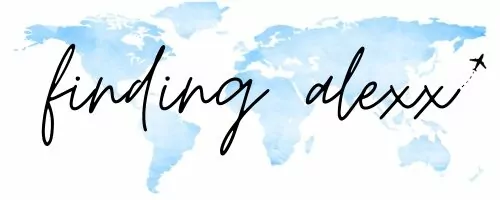
Hello Alexx!!
My name is Phin. I am looking into taking a 7-day trip included flights from United States to Switzerland either late September or early October. While I am doing some research I am running to your post😊
I am a widow of 3 years now and I will be traveled with my 6 year old son. I have never been to Europe and Switzerland is my 1st country that I would like to visit. I love sightseeings and my son loves train rides, car cable rides and hand-on activities like chocolate factory😊
I reached out to the travel company and got a quote of $8000 for us two without round trip flight tickets from United States. I would want to plan myself but worry as I don’t know if this is a risky option.
In your post you were detailing the transportation options to travel within Switzerland. With your experiences, is it something I should look into if I plan the trip myself instead of travel company? I plan a 7-day trip thus I would be 5 days in Switzerland. What are your recommendations in regards to places and hotels/motels I would look into?
Thank you so much for reading my messages and getting back to me!!
Hi Phin 🙂 Super exciting, you guys will have a great trip. $8000USD is extremely expensive for five days in Switzerland without flights, but it really depends on what level of accommodation/transport/activities you want to do. I have lots of recommendations for where to stay and things to do in my five day and 10 day itineraries which might help you with your planning:
https://findingalexx.com/10-day-switzerland-itinerary/
https://findingalexx.com/5-day-switzerland-itinerary/